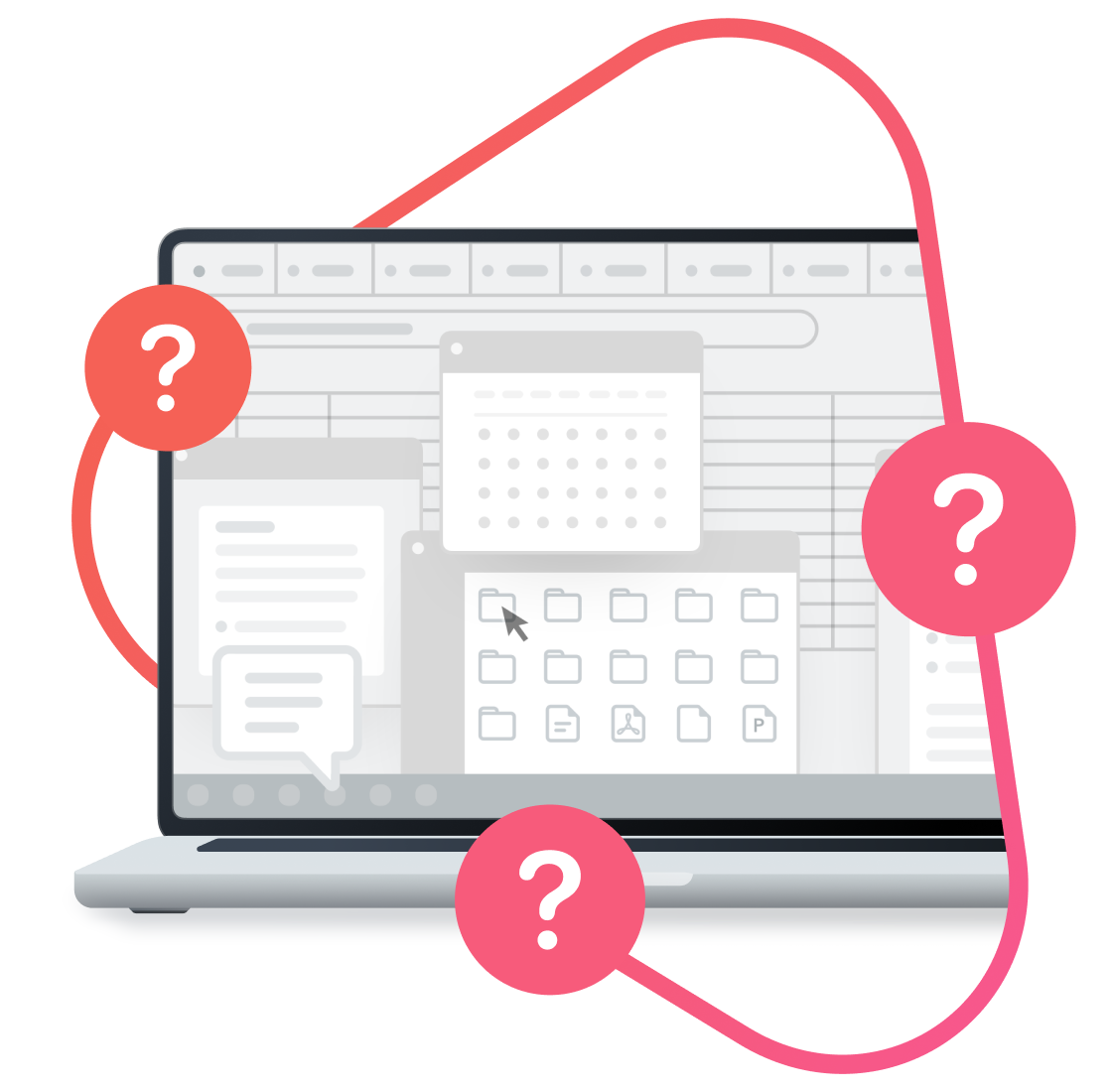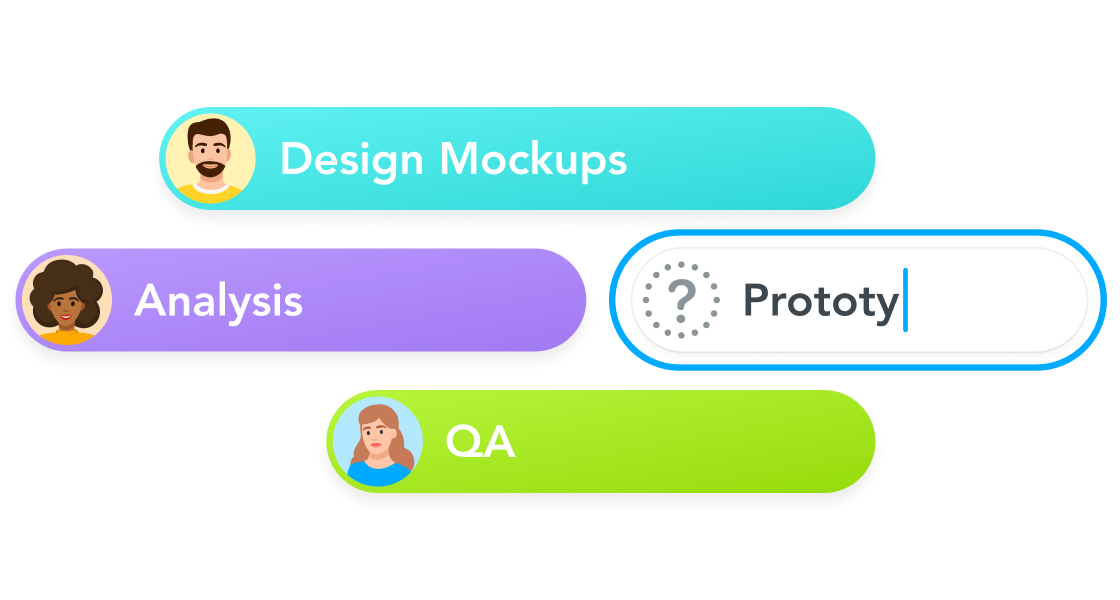Plan for Success.
Project Planning 101.
You want your project to go off without a hitch – which means putting in the groundwork. A clear goal and a grasp of the challenges ahead will set you on the right track. But it’s an informed, realistic and clearly communicated project plan that will get you across the finish line.
Read on to find out:

What Is Project Planning?
Project planning is the foundation of any successful project. It involves documenting the steps, resources, and milestones required to achieve your project goals. A good project plan outlines the project scope and guides your project team through each phase from kick-off to completion. Providing clarity and structure ensures tasks align with objectives, minimizes risks, and maximizes efficiency.
From Planning to Execution.
Project Management Is Easier With MeisterTask.
Unraveling the Pitfalls:
Why Project Planning Fails.
Project planning mistakes can undermine even the most carefully crafted strategies. As a project manager, understanding why many plans fail is crucial to keeping your team on track. From a lack of clarity to poor communication, don’t let these pitfalls block your path to project triumph.
 Inadequate Scope Definition.
Inadequate Scope Definition.
Are your project objectives and deliverables well-defined? If not, you’ll struggle to allocate resources and prioritize tasks effectively. Use SMART goals to provide your project team with clear, actionable guidance.
 Unclear Communication.
Unclear Communication.
Your project team can’t work productively if roles and responsibilities aren’t clearly communicated. Duplicate work, mistakes and missed deadlines will become the norm. A single source of truth will help avoid confusion.
 Unrealistic Timelines.
Unrealistic Timelines.
Rushed project schedules can lead to poor-quality work, burnout and project delays.
Your timeline should reflect the required effort for your project. It should also factor in some wiggle room to account for last-minute changes.
 A Lack of Risk Management.
A Lack of Risk Management.
Optimism is best left at the door when it comes to risk management. Identify potential problems and develop a robust strategy for dealing with them before they arise. This way, you stay one step ahead and closer to success.

Why Does Project Planning Matter?
Project planning provides stakeholders with clarity and direction. A clearly documented project plan keeps your project stakeholders aligned, ensuring communication and collaboration run smoothly. As such, you’re more likely to complete the project on time and on budget – and achieve impactful project outcomes.
The Project Planning Phases.
5 Steps to Successful Project Planning.
Successful project planning requires a methodical approach. It can be tempting to rush it and skip straight to executing your project – but this will only cost you time in the long run. Give your project the best chance of success by following these five simple steps.

Set Clear Project Objectives.
Your project objectives should be clear, specific, and easily understood. Avoid vague language and corporate jargon when you write your project plan. Set relevant KPIs for each objective to measure success and quickly identify when adjustments need to be made.
Plan Your Resources.
You know what you want to achieve – now it’s time to plan how you’ll get there! Assess your resources, from your team’s skills and availability to your budget, and identify any gaps. Establish a timeline for your project, including milestones and deadlines for deliverables.
Communicate Your Plan.
Stakeholder buy-in is essential to get your project off the ground. Create a document outlining your project plan and invite project stakeholders to provide feedback and ask questions. This ensures decisions are transparent and the next steps are clear.
Execute Your Plan.
Project planning isn’t a one-and-done situation. Refer back to your project plan throughout the execution phase to ensure deadlines and KPIs are being met. Use a task management tool to simplify the process and maintain an overview of project progress.
Review and Refine Your Plan.
Even the best-laid plans can change. Regularly assess and adapt the plan based on feedback and changing circumstances. Your team’s ability to be flexible can make or break your project, so stay agile.
Simplify Project Management.
Maximize Success with MeisterTask.
Components of a Project Plan.
The Project Planning Process Explained.
Ready to dive a little deeper? Discover further reading to level up your project planning game. From handy techniques to a detailed exploration of key topics, get to know project planning best practices inside out.
Everything You Need to Know About
Project Resource Management.
Planning and juggling your project resources is no mean feat. You might be competing with other teams for resources, working with a limited budget, or managing multiple resources and struggling to keep an overview. The good news: Robust resource planning can help you overcome these hurdles. In this blog post, you’ll discover how to:


Top Tips for Creating Your
Project Timeline.
Did you know that 48% of projects overrun their deadline? That’s just one reason every project needs a realistic and informed timeline. Other benefits include securing resources, streamlining collaboration and empowering teams to work efficiently. Of course, creating a project timeline is easier said than done. In this blog post, you’ll learn:
Discover the Power of
PERT Charts.
If you love accuracy, accountability and acronyms, then PERT is for you. This planning model helps you calculate the timeframe of your project so you can plan and prioritize your resources, secure stakeholder buy-in, and boost team alignment. Want to harness the power of PERT for your next project? Great! To help you get started, we’ve put together a blog post explaining:

Project Planning Software: Which Project Planning Tools Should You Use?
The project planning software you use will depend on the complexity of your projects. For example, if you’re working on large-scale commercial projects, you might need a specialized resource management system. However, if you’re planning and executing small to medium-sized projects, a task and project management tool is the best choice. Be sure to choose a tool that combines documentation functionality with task management. This ensures your planning and project execution are closely connected for a smooth and efficient process.
It’s As Easy as 1, 2, 3.
How To Create a Project Plan in MeisterTask.
Once you’ve learned the techniques, you need a tool to make workplace productivity work for you. Why not learn from these MeisterTask customers? Each uses our software at various points in their workflows to help them work productively on what matters.
Head Over to Notes.
In MeisterTask, navigate to Notes in the sidebar. You can either create a new note from scratch or open the “Project Plan” template to get started quickly. Use colors, info boxes, bullet points and more to make your project plan scannable and visually engaging.
Fill Out Your Plan.
Next, add your content, including objectives, stakeholders, budget and deliverables. A table of contents will make your plan easy to navigate. Invite project members to comment on your project plan, and even display your note as a presentation in a single click.
Create Your Tasks.
All set? Create your project in MeisterTask and add tasks with assignees and deadlines. Link to your plan from within tasks so team members can refer to it as they work. With tasks and documentation centralized, your team stays aligned at every stage of the project.

“We create a task in MeisterTask for each client, and link to our project notes from the parent task. This way, we have everything relating to one client in one place – and we don’t need to go hunting for information in other tools.”
Christian Müller
Founder, sozial-pr
Put Your Plans in Action.
Manage Project Workflows Seamlessly.
Success in Every Sector.
Which Industries Benefit From Project Planning?
Whether streamlining production processes in manufacturing or ensuring regulatory compliance in banking, a solid project management plan is critical to success. Find out how four of the largest traditional industries benefit from clear and effective project planning.
 Manufacturing.
Manufacturing.
Project planning in manufacturing streamlines production cycles, meaning companies can produce more, faster. It enhances operational workflows and accelerates time-to-market.
 Construction.
Construction.
Whether building skyscrapers or developing city infrastructure, project planning in the manufacturing sector ensures timelines and budgets are adhered to, and safety standards are maintained.
 Banking.
Banking.
In the dynamic world of banking, project planning is essential for implementing new technologies, launching financial products, and ensuring regulatory compliance.
 Healthcare.
Healthcare.
Project planning in healthcare is the key to delivering timely care, meeting compliance standards, and optimizing medical resources to improve patient well-being.

Your Projects – Done Your Way.
Want to learn more about how leaders in your industry use MeisterTask to plan, manage and execute their projects? Take a look at our customer stories for inspiration and discover how MeisterTask can work for you and your team.
Plan. Do. Achieve.
Boost Project Efficiency With MeisterTask.
Your Questions, Answered.
Project Planning: FAQs.
Why is project planning important?
Project planning ensures clarity, aligns efforts, and minimizes uncertainties, optimizing resources for effective project outcomes. A clear project scope and timeline ensures all project stakeholders know what needs to be delivered and by when. As such, every part of the project can be completed on time and to a high standard.
How does project planning benefit collaboration?
Effective project planning improves collaboration by clearly defining roles and responsibilities. It provides a roadmap for every phase of the project so your project team can work in alignment towards a shared goal. A well-written project plan empowers your team to work productively as all the information they need is easily accessible.
Can project planning adapt to changing circumstances?
Absolutely! Flexibility is vital to success, and a good plan will include methods to monitor and assess project effectiveness. Not meeting your KPIs? Figure out what’s not working and adapt your plan as new information arises. With your plan documented in your task management tool, it’s easy to update your plan and notify your team of any changes.
What role does communication play in project planning?
Communication is paramount in project planning. Clear and consistent communication ensures everyone is on the same page and enhances overall project coordination. Remember that planning continues throughout the project. Be sure to communicate project developments and adjustments to your team by updating your planning document regularly.
How can project planning counter unforeseen risks?
You can only control what you can control – but planning can soften the blow when things don’t go as expected. Identifying and mitigating potential risks helps you and your team meet project goals, even in the face of unexpected challenges. These might include changes in consumer spending, new regulations or budget cuts to name a few.
Is project planning only for large projects?
No! Project planning is valuable for projects of all sizes. Even small projects benefit from the clarity a well-thought-out plan provides. However, some projects require more in-depth and detailed planning than others. Avoid over-engineering simple tasks as this can add unnecessary complexity and waste your team’s valuable time.
